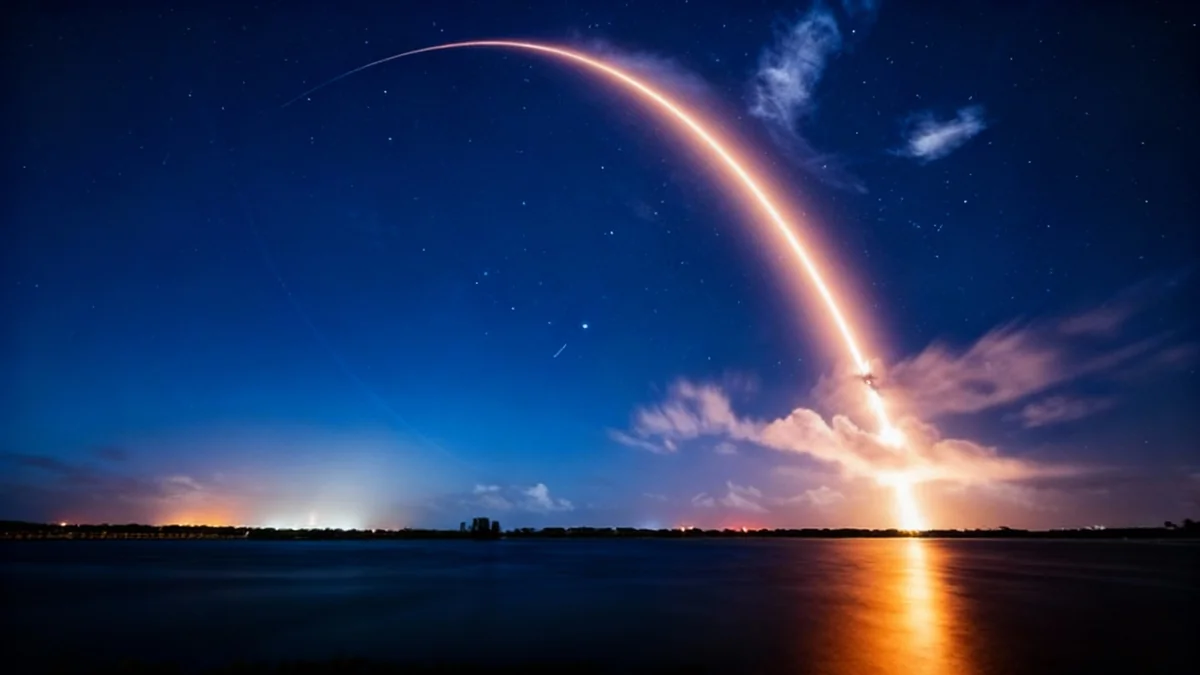A full-scale prototype of a next-generation Lunar Terrain Vehicle (LTV), designed to support NASA's upcoming Artemis missions, is now on public display at the Kennedy Space Center Visitor Complex in Florida. The rover, named the Eagle LTV, represents a significant step forward in technology for lunar surface exploration.
Developed by the commercial space company Lunar Outpost and its partners, the vehicle is one of three designs competing for a NASA contract to provide mobility services for astronauts on the Moon. The prototype will be available for public viewing until October 10.
Key Takeaways
- A prototype of the Eagle Lunar Terrain Vehicle (LTV) is on display at the Kennedy Space Center Visitor Complex.
- The vehicle is a finalist for a NASA contract to support the Artemis lunar missions.
- The display is located inside the Gateway complex and runs through October 10, concluding with the World Space Week Expo.
- The rover is designed to function as a mobile science lab, extending astronaut exploration range on the Moon.
Next-Generation Rover for Lunar Exploration
Visitors to the Kennedy Space Center have a limited-time opportunity to see a vehicle that could one day transport astronauts across the lunar landscape. The Eagle LTV is showcased inside the Gateway: The Deep Space Launch Complex®, an attraction dedicated to the future of space travel.
This prototype is not just a concept model; it represents a functional design intended for the harsh environment of the Moon. Its primary purpose is to provide astronauts with the ability to travel much farther from their landing sites than was possible during the Apollo missions, significantly expanding the potential for scientific discovery.
The display period culminates with the World Space Week Expo, offering a final chance for the public to get an up-close look at the advanced engineering involved in modern lunar vehicle design.
The Artemis Program Context
NASA's Artemis program aims to establish a sustainable human presence on the Moon, which will serve as a stepping stone for future missions to Mars. A key component of this program is the development of reliable and versatile surface transportation. Advanced rovers like the Eagle LTV are critical for carrying crew, scientific instruments, and cargo across challenging lunar terrain, enabling long-duration missions and the construction of a future lunar base.
A Collaboration of Industry Leaders
The Eagle LTV is the product of a strategic partnership between several major companies, each contributing specialized expertise. Lunar Outpost leads the project, working alongside automotive giant General Motors, technology and defense firm Leidos, tire manufacturer Goodyear, and space robotics company MDA Space.
This collaboration brings together decades of experience in vehicle engineering, autonomous systems, and materials science. According to project details, the rover is designed to be more than just transportation. It is envisioned as a mobile science laboratory, equipped to support complex research activities directly on the lunar surface.
Advanced Mobility for a New Era
The design of the Eagle LTV marks the first time since the Apollo era that a vehicle has been developed specifically for transporting crew and significant cargo across the extreme and varied terrain of the Moon. This capability is essential for unlocking new areas for scientific investigation and establishing long-term operations.
The vehicle's development is part of NASA's LTV Services (LTVS) award competition, which seeks a commercial partner to provide an end-to-end solution for lunar mobility. This approach allows NASA to purchase services rather than owning and operating the hardware, a model that has proven successful with commercial cargo and crew missions to the International Space Station.
Paving the Way for a Sustained Lunar Presence
The ultimate goal of the Artemis program is to build a foundation for long-term human operations on the Moon and, eventually, Mars. The Eagle LTV and its competitors are central to this vision. By enabling extended exploration and logistical support, these rovers are a cornerstone technology for a sustained off-world presence.
"Vehicles like the Eagle LTV are fundamental to our long-term goals on the Moon," a program official might state. "They transform a landing site from a temporary camp into a base of operations, allowing our astronauts to be true field scientists on another world."
The ability to travel greater distances will allow astronauts to access geographically diverse sites, collect a wider variety of samples, and deploy complex scientific instruments far from the landing zone. This will greatly enhance the scientific return of each Artemis mission.
Visitor Information for Kennedy Space Center
Officials for the Kennedy Space Center Visitor Complex have also confirmed that all operations, attractions, and tours will continue as scheduled, independent of any potential U.S. government shutdowns. This ensures that public access to the complex remains uninterrupted.
Key attractions available to guests include:
- Space Shuttle Atlantis®: The permanent home of the historic space shuttle, displayed as if in flight with its payload bay doors open.
- Kennedy Space Center Bus Tour: A tour that takes visitors behind NASA's gates to see historic launch sites and operational facilities.
- Gateway: The Deep Space Launch Complex®: An exhibit showcasing current and future space exploration technology, where the Eagle LTV is currently displayed.
Special interest tours, such as the Explore Tour, are also expected to operate on their normal schedules. Visitors planning a trip before the October 10 deadline will be able to experience the full range of exhibits in addition to viewing the lunar rover prototype.





